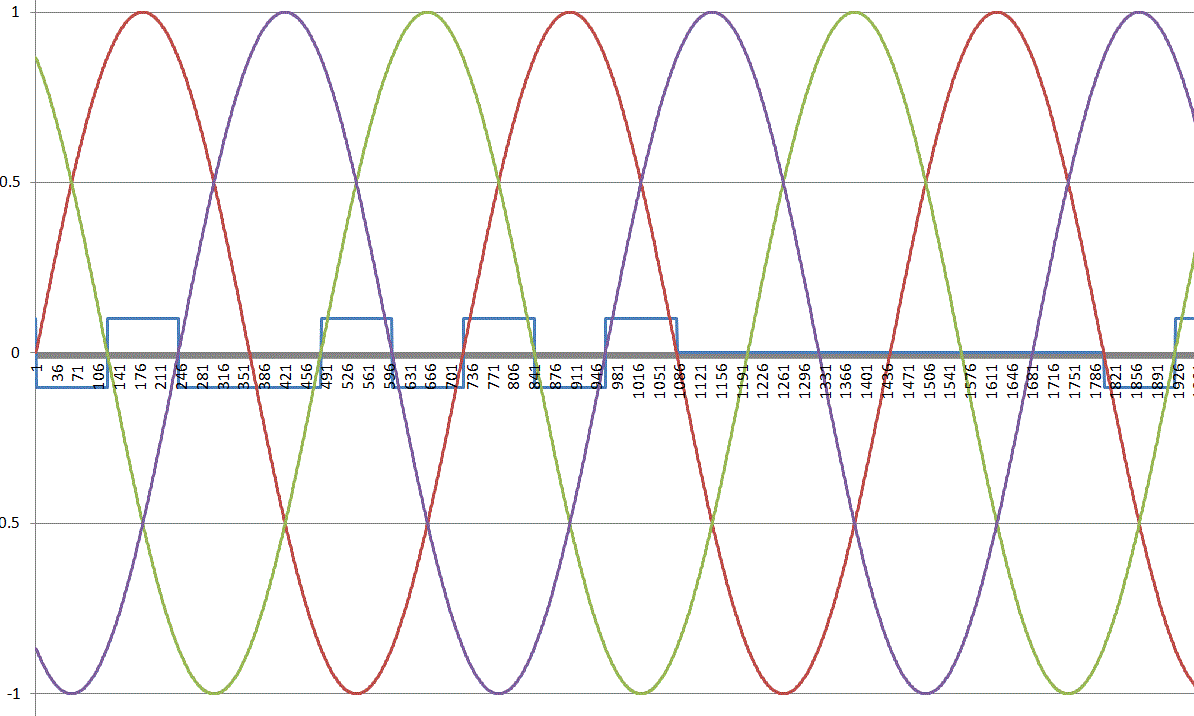

DigitalTF is low frequency PowerLine communication, not unlike ripple control. At 10% of the cost level of ripple control and 10 times the performance, DigitalTF is however also uncomparable to Ripple Control. Due to the advanced information coding, transmission levels are just 0,4V. A DigitalTF command takes just 1 second. DigitalTF sends 24/7, thus creating unprecedented robustness.
Unlike ripple control which encodes information between the harmonics of the mains frequency spectrum, DigitalTF uses subharmonics and advanced digital filtering. In the used subharmonics area of the mains frequency spectrum the noise is significantly lower than in the superharmonics, where THD generated by switched mode power supplies and other contemporary apparatus has completely poisoned the spectrum. The SNR achieved by DigitalTF is an order of magnitude better than conventional ripple control.
DigitalTF modulates phase-synchronous to the mains frequency with extreme timing accuracy. As such, it also uses the accurate timing of the mains itself to improve SNR, distancing itself from conventional ripple control.
The carrier frequency is 150 or 180Hz, 3 times the mains frequency. DigitalTF can encode all 3 phases of the mains wiring with one single transmitter and coupler, using subharmonic Manchester bit coding. The coupler is a low-cost toroid transformer for new installations or a snap-on current transformer for existing installations. No need to power down. This coupler is positioned over the Neutral wire in a TN-S system.
Information coding is more contemporary, using typical digital broadcast methods such as FEC error detection and correction. This opposed to conventional ripple control, where frequency bursts in an asynchronous timing sequence have to define the bits without any redundancy. No shame for the ripple control inventors: a century ago these digital techniques simply did not exist. Being 100 years old ripple control feels and in fact is, archaïc.
Unlike Ripple Control which uses spontaneous start pulses and long telegrams asynchronous from the mains frequency, DigitalTF sends 24/7 with accurate timing synchronisation between transmission and reception. As such, DigitalTF delivers an optimal compromise between latency and noise while delivering solid robustness.
DigitalTF is not just some theoretical laboratory experiment. In lighting applications 2000 transmitters and 50000 receivers have been installed and require very little aftercare. We however believe that the killer application is in the energy market: congestion management for the LV grid. We also envision dimming of public lighting as ideal for DigitalTF. In fact, you probably envision other possibilities as well.
